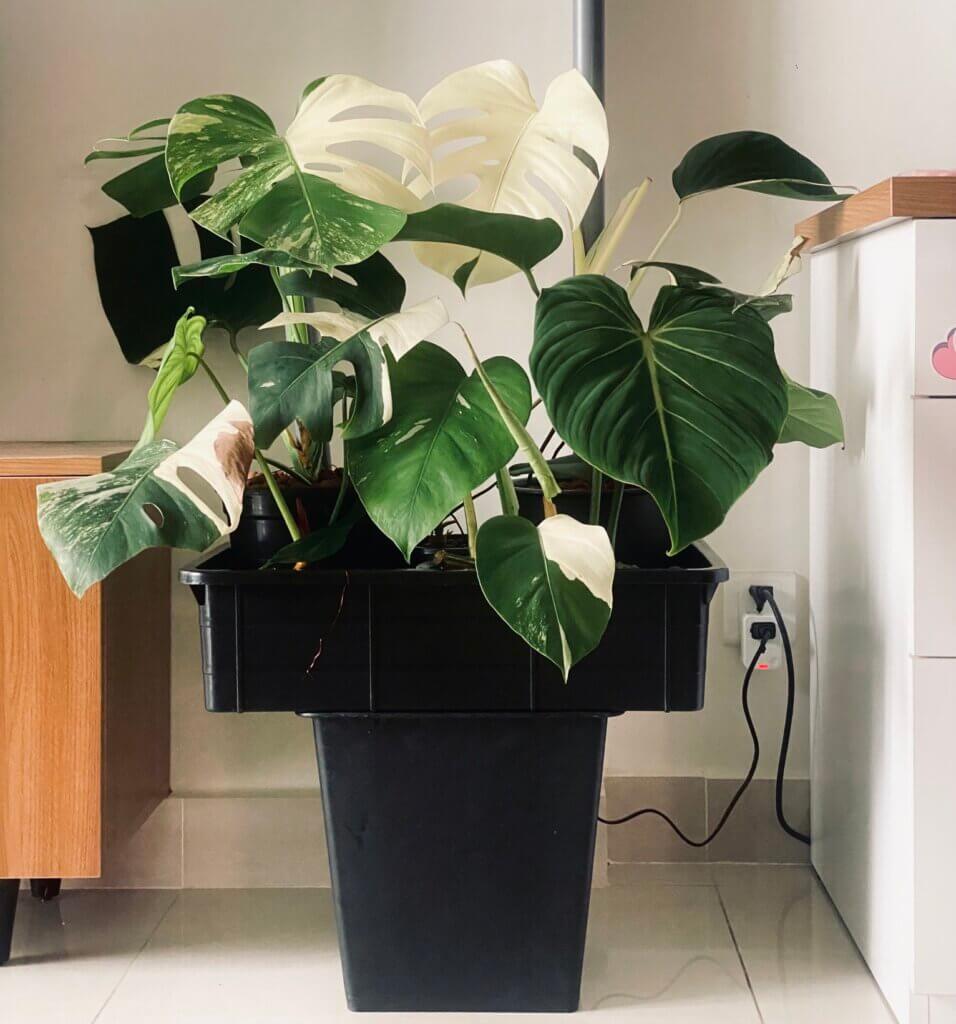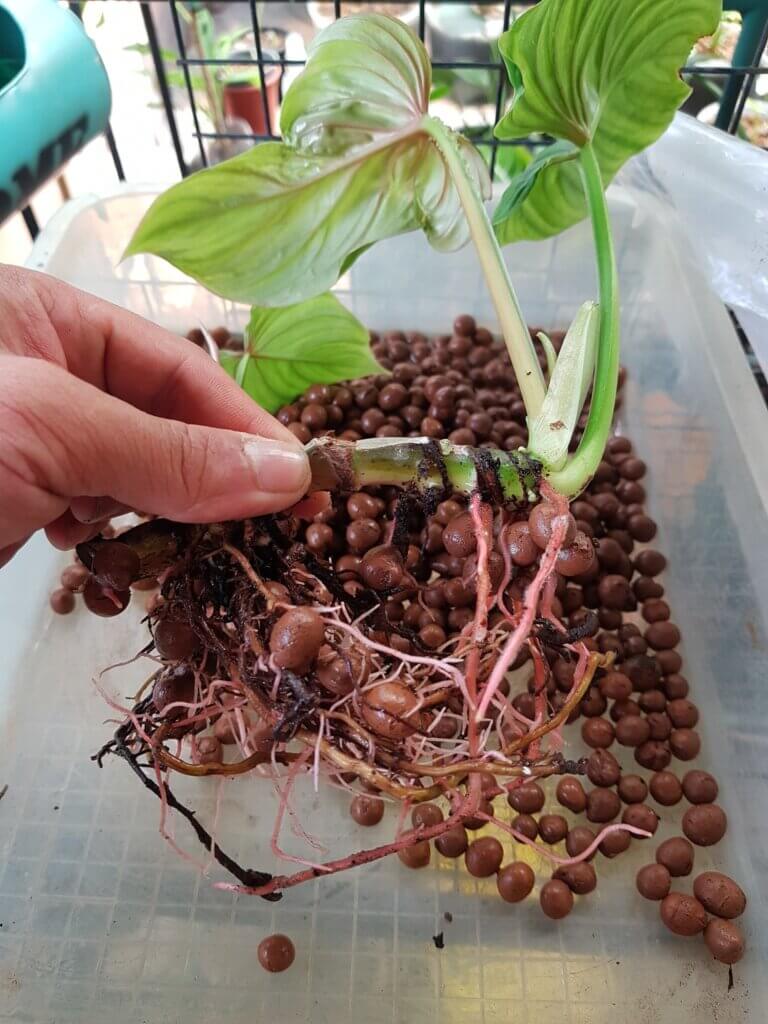In the world of houseplant care, both Pon and LECA (Lightweight Expanded Clay Aggregate) have become popular choices for plant enthusiasts seeking alternatives to traditional soil.
Each offers unique benefits and challenges, and understanding how to transition plants between these two mediums can be invaluable.
Whether you’re moving from Pon to LECA for better water management or from LECA to Pon for a different nutrient setup, this guide is designed to help you navigate these transitions smoothly, ensuring your plants’ health and happiness.
Summary
How to move Plants from LECA to Pon and Vice Versa
- Pon and LECA Basics:
- Pon: Granulate mix for water retention and nutrient distribution.
- LECA: Clay balls for drainage and aeration in hydroponics.
- Transitioning Plants:
- From Pon to LECA: For better aeration and reduced overwatering.
- From LECA to Pon: For balanced moisture and nutrient management.
- Key Steps:
- Remove plant, clean roots, and transfer to new medium.
- Adjust watering and feeding according to the medium.
- Aftercare:
- Monitor water needs and plant health.
- Allow time for plants to adapt.
- Medium Comparison:
- LECA: Good for drainage, requires nutrient monitoring.
- Pon: Balances moisture and nutrients, easier maintenance.

Understanding Pon and LECA
The Basics of Both Mediums
Before diving into the transition process, let’s briefly overview what Pon and LECA are:
- Pon: Often used in Lechuza self-watering planters, Pon is a granulate blend of pumice, zeolite, and lava, offering good water retention and nutrient distribution.
- LECA: These are expanded clay balls that provide excellent drainage and aeration, commonly used in hydroponic and semi-hydroponic setups.
Transitioning from Pon to LECA
- Reasons for Transitioning: You might choose to move plants from Pon to LECA for reasons like improved aeration, reduced risk of overwatering, or experimentation with the new semi-hydroponic system.
- Preparing for the Transition: Gather the necessary materials, including LECA, a suitable container / pot, and hydroponic nutrients.
- The Transition Process:
- Gently remove the plant from Pon, cleaning off the roots carefully.
- Rinse and soak LECA in water.
- Place the plant in the new container with LECA, ensuring proper placement for root support.
- Begin your new watering and feeding regimen, tailored to LECA’s properties.

Transitioning from LECA to Pon
- Why Switch to Pon: This might be due to personal preference, plant health considerations, or a desire for a medium that offers both aeration and moisture retention.
- Preparing for the Transition: As with the previous process, preparation involves gathering Pon, a new pot, and any additional nutrients your plant may require.
- The Transition Steps:
- Remove the plant from the LECA, taking care to not damage the roots.
- Rinse the roots to remove all traces of LECA.
- Place the plant in Pon, ensuring it’s evenly distributed around the roots.
- Adjust your watering habits to accommodate Pon’s moisture-retaining properties.
Aftercare and Adjustments
Regardless of the direction of the transition, post-move care is crucial:
- Watering Adjustments: Both LECA and Pon handle water differently. Monitor your plants closely and adjust your watering schedule accordingly.
- Monitoring Plant Health: Look out for signs of stress or adaptation issues.
- Patience is Key: Allow your plants time to acclimate to their new environment.
Read more: Best Transitioning Tips for Semi Hydroponics
Pon vs. LECA
When choosing between Pon and LECA for your houseplants, it’s important to understand their distinct characteristics:
- Water Management: LECA facilitates excellent drainage and reduces the risk of overwatering, while Pon offers a balance between moisture retention and drainage.
- Nutrient Delivery: In LECA, nutrient levels are manually controlled via a hydroponic solution, whereas Pon can hold and distribute nutrients more consistently.
- Root Health: LECA promotes strong root growth due to better aeration, whereas Pon’s balanced environment supports a wider range of plant types.
- Ease of Maintenance: LECA might require more attention to water and nutrient levels, while Pon can be more forgiving with a semi-self-regulating system.
- Plant Suitability: Some plants may thrive better in one medium over the other, depending on their specific needs for moisture, nutrients, and air.
Read more: LECA vs. Pon vs. DIY Pon
Conclusion
Transitioning houseplants between Pon and LECA can open up new possibilities for plant care and cultivation.
Each medium has its unique benefits and challenges, and understanding these can help you make the best choice for your plants.
Whether you’re moving from Pon to LECA for a more hydroponic approach or from LECA to Pon for different nutrient and water management, the key to success lies in careful planning and attentive aftercare.
Embrace the journey of experimenting with these mediums, and watch your houseplants thrive in their adapted environments.

